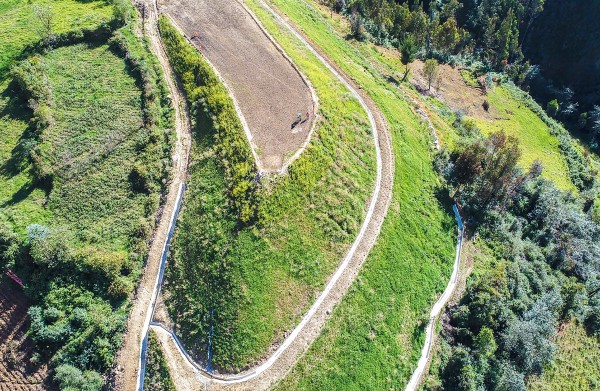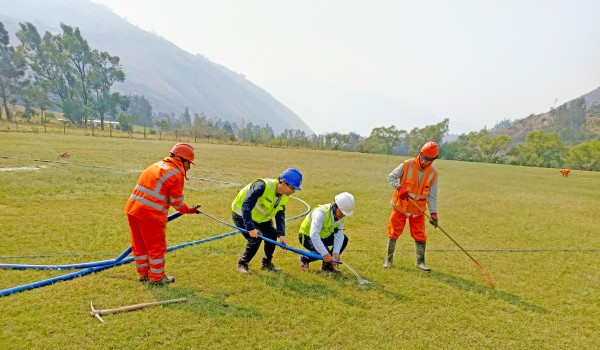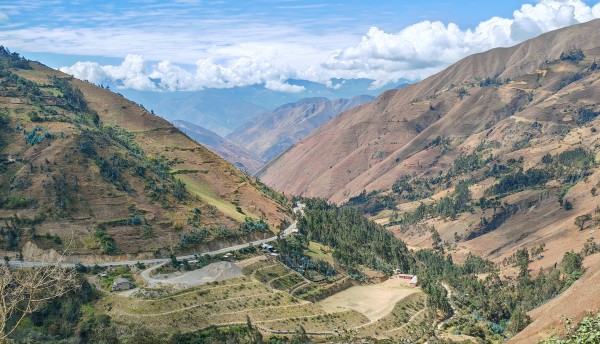The Andes National Highway, currently Peru’s largest infrastructure project, is being constructed by China Railway 20th Bureau Group Corporation Limited, a subsidiary of China Railway Construction Corporation Limited (CRCC).
The highway runs entirely through the Andes, the world’s longest mountain range, crossing diverse ecosystems, including high-altitude meadows, tropical rainforests and wetlands.
The native forests along the highway represent an irreplaceable ecological resource. To safeguard them, the project’s forestry team spent a year meticulously studying the characteristics of each tree species in the region.

A revegetated spoil ground along the Andes National Highway, built by China Railway 20th Bureau Group Corporation Limited in Peru [Photo/sasac.gov.cn]
Following the completion of a 52-kilometer roadbed in December 2023, the team assumed full responsibility for forestry management along the entire route. Trees within the construction zones were carefully marked and transplanted using advanced techniques, with plans to return them to their original sites post-construction for ongoing care.
“Transforming spoil grounds into green forests” is a sustainable model pioneered by the team. The highway’s route through the rugged Andes required extensive earthworks, resulting in 54 spoil grounds covering 900,000 square meters in one section alone. To revegetate these areas, the team collaborated with local experts, selecting plants suited to varying altitudes.
The month of August, which is Peru’s driest season, poses additional challenges for ecological restoration. Daily irrigation is essential for newly planted saplings, and despite the long distance between water sources and planting sites, both Chinese and Peruvian workers remain dedicated. Thanks to their efforts, over 1,000 transplanted trees have successfully taken root.

Chinese and Peruvian workers irrigate green spaces at a spoil site along the Andes National Highway project. [Photo/sasac.gov.cn]
At 3,200 meters above sea level, shrubs are thriving in greenhouses built to combat the region’s drastic temperature shifts. Over 30 greenhouses have been built to date, cultivating 2,000 kilograms of grass seeds and 6,500 saplings, which are later transplanted outdoors to support local ecosystem restoration.

The Andes National Highway project [Photo/sasac.gov.cn]
The Andes National Highway spans 236.63 kilometers and, upon completion, will connect to the Pan-American Highway. It will benefit 270,000 people across 243 towns, significantly improving transportation and driving local economic development.
The project’s environmental efforts have earned three consecutive letters of appreciation from the Forestry Bureau of Huánuco Province, praising CRCC as a responsible international contractor committed to sustainability. By promoting green infrastructure and biodiversity conservation, Chinese builders are helping Peru achieve a balance between economic growth and environmental protection, contributing to a cleaner, greener world.
(Executive editor: Wang Ruoting)